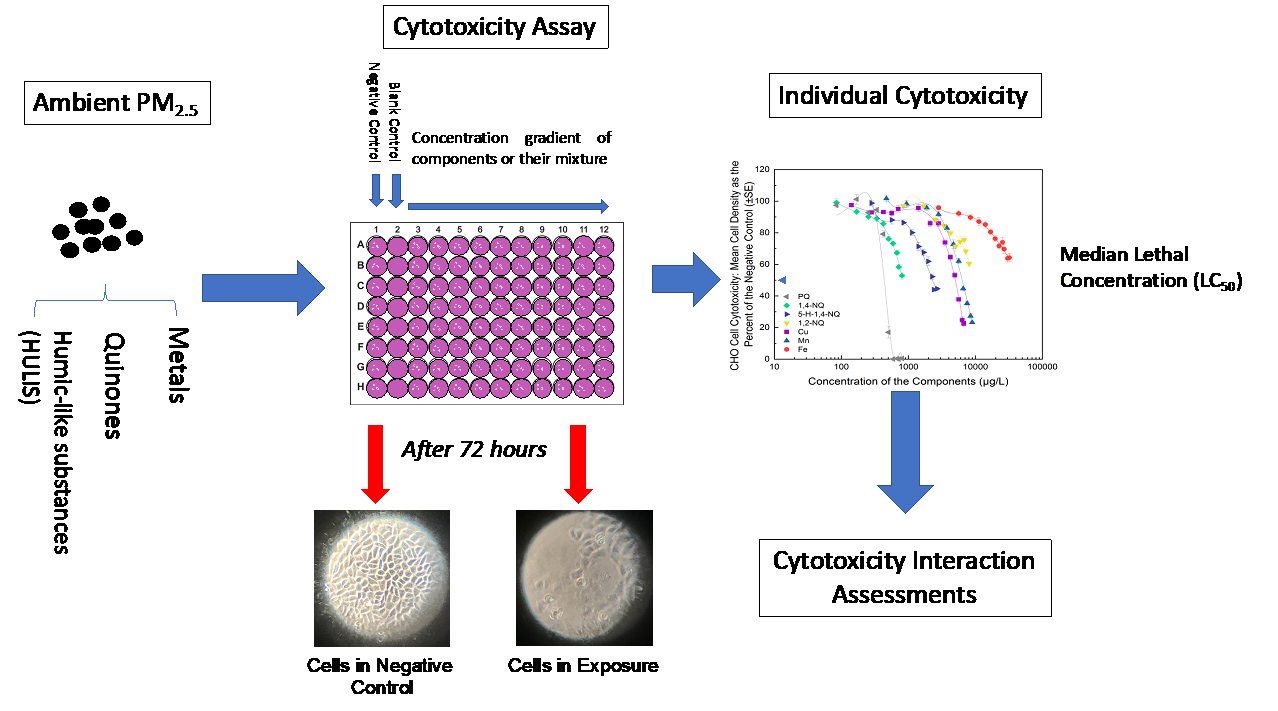In this study, we plan to compare the response of all the available OP assays with the cellular toxicity on a large number of PM samples collected from an extensive spatial scale. Using the samples collected from different emissions settings and environments will eliminate the effect of specific chemical composition biases on the relationship between OP and toxicity. Moreover, our study will employ some of the recently developed ROS probes (e.g. •OH measurement in DTT, SLF), which incorporate, for the first time, the interactions between organic compounds and metals in the ROS generation. Our novel approach of exposing the antioxidants-enriched cells to the PM samples, will provide the most direct evidences to test if cellular ROS generation plays a key role in causing the cellular toxicity and to what extent it is related with the chemical assays measuring the antioxidants consumption rates by ambient PM.
A novel assay using Chinese Hamster Ovary Cells developed in our lab for assessing the cytotoxicity of PM2.5 and its components
Related Publications
Wang, Y., Mukherjee, U. K., Plewa, M. J., and Verma, V., 2018. Assessing the cytotoxicity of ambient particulate matter using Chinese hamster ovary (CHO) cells and its relationship with the chemical composition and oxidative potential, Atmospheric Environment, 179, 132-141.
Wang, Y., Puthussery, J.V., Yu, H., Verma, V., 2020. Synergistic and antagonistic interactions between the organic and metallic components of the ambient particulate matter (PM) for the cytotoxicity measured by Chinese Hamster Ovary cells. Science of Total Environment, 736, 139511, 1-9.

